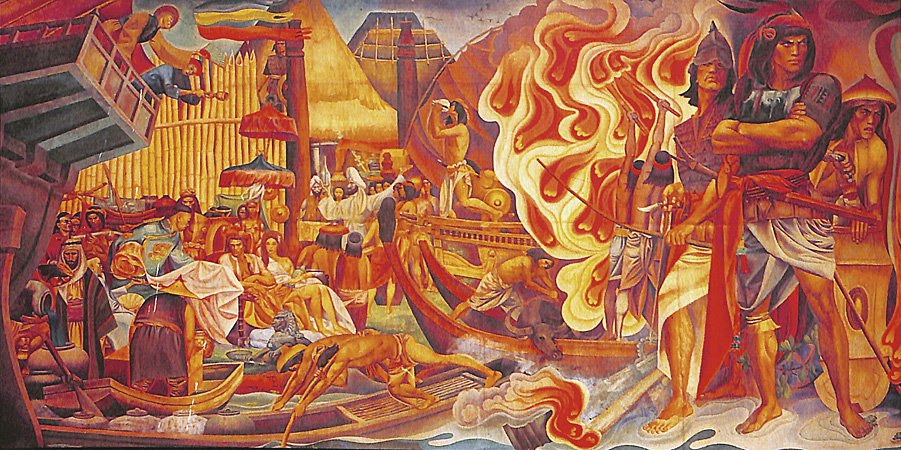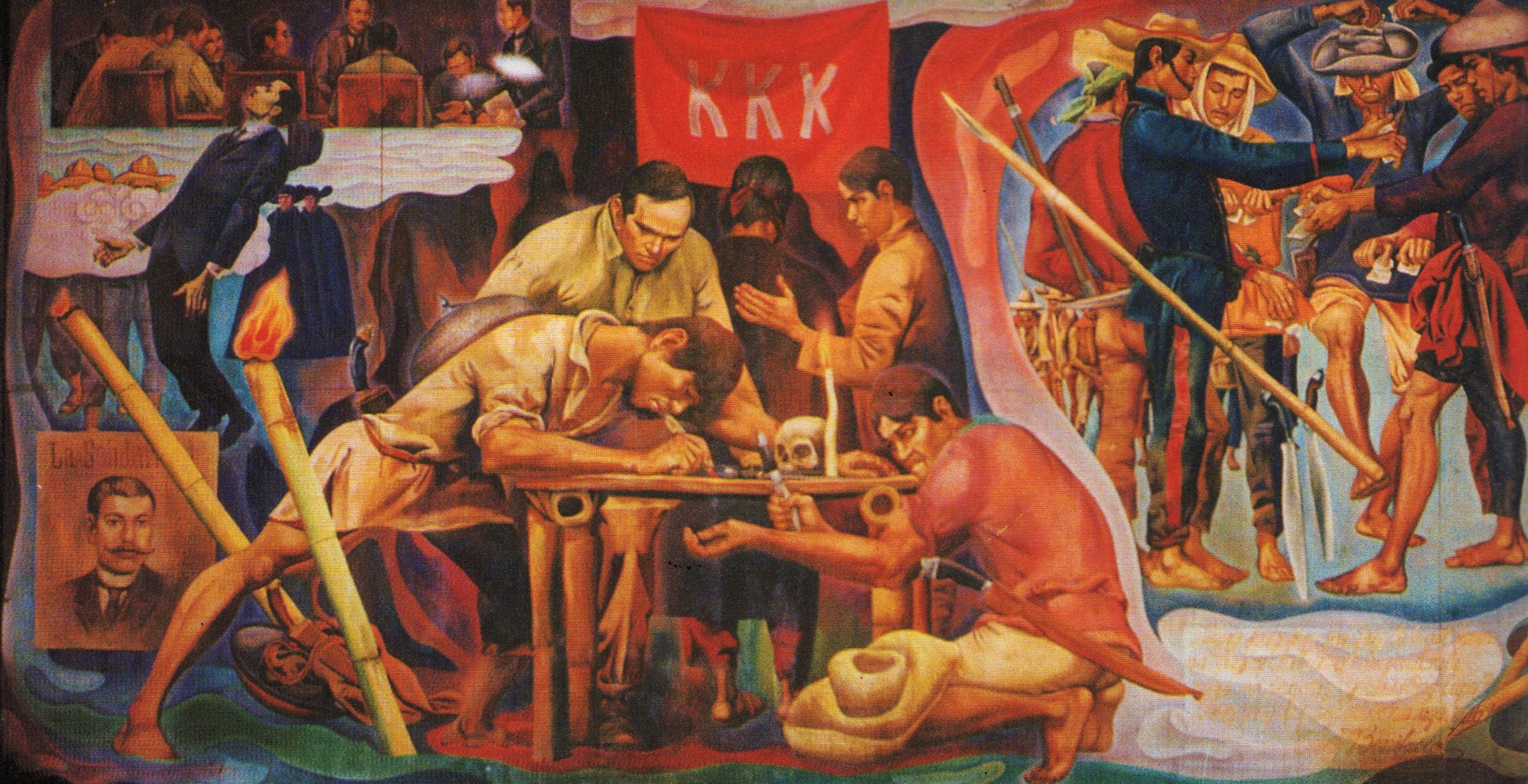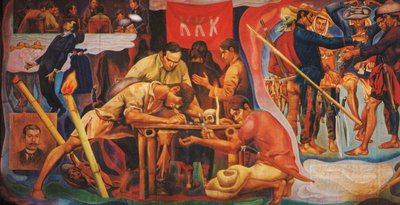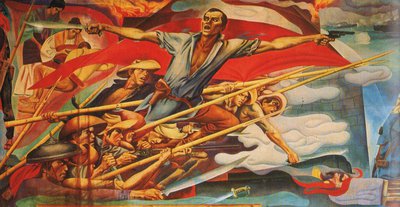Cultural Center of the Philippines
ENCYCLOPEDIA OF
PHILIPPINE ART
[Filipino Struggles Through History]
1964 / Oil on canvas / 270 x 487 cm / Artist: Carlos V. Francisco aka Botong Francisco / Old Senate Session Hall, National Museum of Fine Arts, Manila
Francisco’s works, especially his murals, are greatly enriched by the nationalist orientation that motivated his assiduous research into Philippine history, customs, and traditions. The artist’s first major mural was done for the 1953 Manila International Fair. Its theme, 500 years of Philippine history, encompassed legendary origins to the formation of the republic.
In 1964 Francisco was commissioned by the City of Manila to do a historical mural for the Bulwagang Katipunan. This depicts in visual narrative the history of Manila from Tondo’s valiant rajahs through the Spanish colonial period and the Philippine Revolution of 1896, the American regime, the Japanese occupation, and the postwar years to the 1960s. Each episode is represented by a major event, such as the Blood Compact and the ritual initiation into the Katipunan, or by historical figures, such as Jose Rizal and Francisco Balagtas, and supported by secondary vignettes. The episodes are neither presented in a static manner nor rigidly separated in isolated compartments. They flow into each other through interlining devices in keeping with the nature of the scenes depicted: a meandering stream alluding to the Pasig and to the building of the city, a bright climbing flame suggesting the ardor of the revolutionary passion for freedom, and curling cloud-like smoke signifying the creative imagination composing the literary masterpieces of Rizal and Balagtas.
The murals are characterized by sustained vigor and ingenious inventiveness, as in the choice of dramatis personae representing not only renowned persons but also character types, unifying all in a flowing narrative scheme.
The Bonifacio episode is one of the most dynamic sections of the Bulwagang Katipunan mural. The central figure is Andres Bonifacio, founder of the Katipunan, the mass movement that aimed at independence from colonial rule through armed revolution. Calling his men to arms, the heroic figure rises above the massed group of Katipunero and, straining upward and sideward with outstretched arms, seems to break out of the confines of his space, with the billowing red flag behind him enhancing the forward thrust of his torso. Dynamic movement is further heightened by the long bamboo spears. The sense of movement is also dramatized by the varied positions of the figures. Their background space is defined by a stonewall suggesting fortified Intramuros, seat of colonial authority, which must be broken down.
Francisco succeeded in forming a visual language that was both Filipino and Southeast Asian: his bright clear colors of folk art, the flowing rhythmic lines creating decorative patterns, the strong but supple sense of design, and the particular disposition of space that satisfies the Filipino penchant to fill up the entire field. The Bulwagang Katipunan mural is a masterpiece in the national heritage.
Written by Alice G. Guillermo




